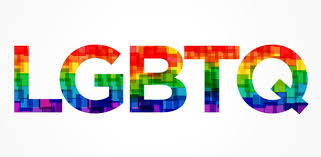In an ever increasing attempt ensure that my evaluation meets all industry standards I have created a second explanation of how this evaluation adheres to a different set of program evaluation standards taken from:
The Joint Committee on Standards for Educational Evaluation, James R. Sanders, Chair (ed.): The Program evaluation Standards, 2nd edition. Sage Publication, Thousand Oaks, USA, p.23-24; 63; 81-82,125-126 (see www.wmich.edu/evalctr/jc/)
Program
Evaluation Standards
Utility Standards
Evaluators will ensure that the needs of all intended users
will be met by being credible, having an appropriate timeline of one school
calendar year and ensuring the that evaluation is meaningful to all stakeholders
- * by using a Beneficiary Assessment approach the
evaluator will ensure that the needs of all intended users will be met and that
it addresses questions meaningful to all stakeholders involved
Feasibility Standards
Evaluators will be practical, realistic, and apply results
with efficiency and sensitivity
- * as the evaluators will be working with all
intended users and will be implemented with their needs and interests in mind,
the recommendations made will be such that they will meet the needs of all interested
groups
- * the evaluation will receive funding from the
PVNCCDSB and as such operate with an appropriate and realistic budget, thus
meeting the needs of those involved in the evaluation
- * all intended users at various levels will
participate meaningfully (providing feedback throughout the evaluation) in the
evaluation and as such all interests will be represented in the reported
findings
Propriety Standards
The evaluation will be conducted legally, ethically and take
into account the level of sensitivity of the issue being evaluated by working
closely with all stakeholders and intended users by adhering to the Canadian
Charter of Rights and Freedoms, gaining consent for participation by all
participants and disclosing findings diverse meaningful and sensitive manners
- * evaluators will be working hand-in-hand with all
stakeholders including The PVNCCDSB, educators, students and with The Ministry
of Education. As such the evaluation will meet all legal and ethical standards
of the organizing bodies involved.
- * consent forms will be handed out and collected
for all those participating in the evaluation (some required to be signed by
parents)
- * all people involved will be treated with dignity
and respect through the dissemination of accurate information by trained experts
Accuracy Standards
The evaluation will reveal and convey accurate information
worth merit of the program being evaluated
- * the program contain a variety of different types
of qualitative and quantitative data that maintains the context (purpose) of the
evaluation
- * through working with intended users the
evaluation will ensure the information is as accurate as possible,
systematically collected using experts and efficient data collection methods
and will be disseminated meaningfully through a diverse set of methods designed
to communicate results with a maximum understanding of all intended users
- * by working with (having checks and balances) all
levels of administration, the PVNCCDSB, parents, and students, avoidance of
stakeholder biases will be ensured and as such the results will be communicated
clearly and accurately
Also Please visit the following Link to see a model of how steps in the evaluation process will take place.

